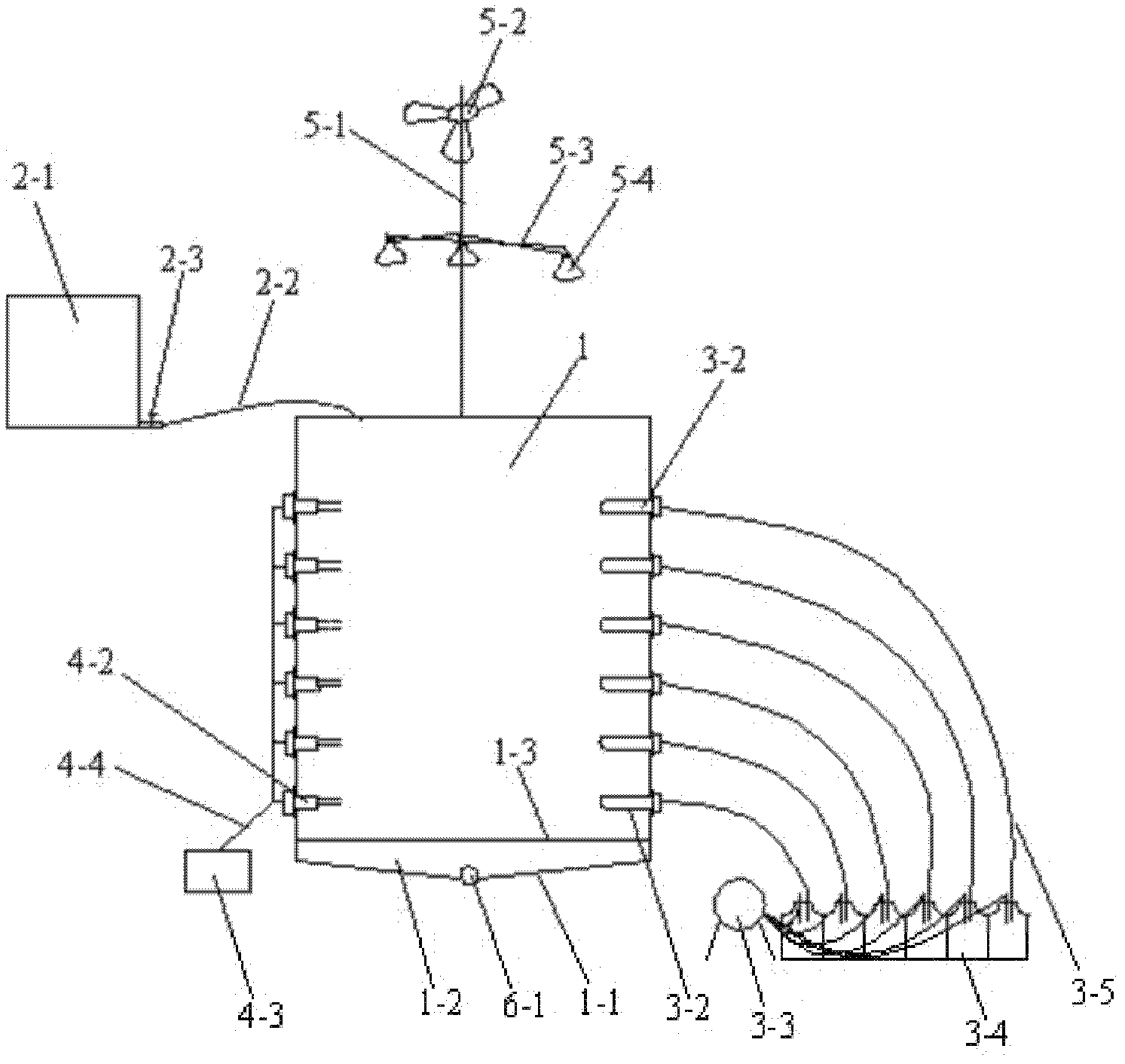Simulated large-field soil and solute transporting system
A solute transport and soil technology, applied in the field of field soil solute transport system, can solve the problems of inability to study a single factor, small evaporation, inhomogeneity of field soil texture and background value, etc., shorten the test cycle and improve the test efficiency. Accuracy, the effect of reducing boundary effects
- Summary
- Abstract
- Description
- Claims
- Application Information
AI Technical Summary
Problems solved by technology
Method used
Image
Examples
Embodiment Construction
[0028] The specific implementation manners of the present invention will be further described in detail below in conjunction with the accompanying drawings and embodiments. The following examples are used to illustrate the present invention, but are not intended to limit the scope of the present invention.
[0029] Such as figure 1 and figure 2 As shown, a system for simulating field soil solute migration of the present invention includes soil tank 1, water supply system, sampling system, data acquisition system and eluent collection system; the inner wall and bottom of soil tank 1 are provided with a waterproof layer, The inside of the tank 1 is filled with soil; the water supply system is located outside the soil tank 1, and water is supplied to the soil tank 1 from top to bottom; the sampling system is installed on the side wall of the soil tank 1 to measure the The solution is sampled; the data acquisition system is installed on the side wall of the soil tank 1, and is ...
PUM
 Login to View More
Login to View More Abstract
Description
Claims
Application Information
 Login to View More
Login to View More - R&D
- Intellectual Property
- Life Sciences
- Materials
- Tech Scout
- Unparalleled Data Quality
- Higher Quality Content
- 60% Fewer Hallucinations
Browse by: Latest US Patents, China's latest patents, Technical Efficacy Thesaurus, Application Domain, Technology Topic, Popular Technical Reports.
© 2025 PatSnap. All rights reserved.Legal|Privacy policy|Modern Slavery Act Transparency Statement|Sitemap|About US| Contact US: help@patsnap.com



